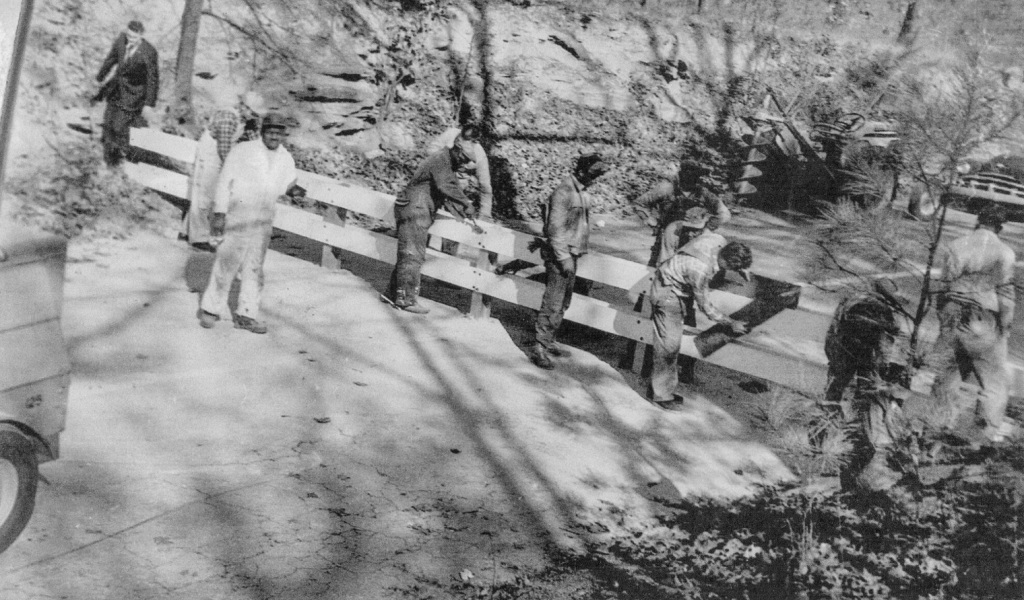A Legacy of Inequity
Despite its pivotal role in the civil rights movement, Atlanta remains one of the most economically and racially divided cities in the country. Decades of exclusionary zoning, redlining, and housing policies shaped a city where opportunity has not been equally distributed.
From the 1922 zoning law that enforced racial segregation to the 1962 construction of a wooden barricade on Peyton Road—built specifically to block Black families from moving into White neighborhoods—Atlanta’s growth has been deeply shaped by systemic racism. Even after these laws were dismantled, their effects endured, influencing where people could live and how communities evolved.
By the 1970s, “White flight” accelerated as federal housing policies incentivized suburban relocation, transforming Atlanta into a majority-Black city. While this shift increased Black political influence, patterns of segregation remained deeply entrenched.

In the 1990s, Atlanta’s White population began returning to the city drawn by economic opportunities. The opportunities to build wealth, however, were unevenly distributed: predominantly White neighborhoods saw rapid economic expansion and rising property values, while many Black neighborhoods remained stagnant. These disparities have led to some of the starkest wealth inequalities in the nation. The median White household in Atlanta holds $238,000 in wealth, compared to just $5,000 for the median Black household—a 46-to-1 gap, far exceeding the national average of 12-to-1.
Rebuilding Stronger Communities: Neighborhood Reinvestment Initiative
In 2022, newly-elected Mayor Andre Dickens took a bold step toward addressing these long-standing disparities by committing to a vision of revitalization that benefits all of Atlanta's neighborhoods. His administration set out to tackle the systemic barriers to opportunity that still exist in many parts of the city. A dedicated team was created to focus on neighborhood revitalization, housing, education, and economic development, all with an emphasis on equity and long-term solutions.
The Neighborhood Reinvestment Initiative
The Neighborhood Reinvestment Initiative focuses on ensuring that all residents, regardless of race or income, can thrive in a city that provides equitable opportunities. By addressing historic inequities and working to ensure sustainable progress, Atlanta is moving toward a future where every neighborhood can flourish.
The city's initiative is centered around transforming communities that have faced decades of disinvestment. Among the 46 neighborhoods identified as historically disinvested-in, six have been chosen as focal points for immediate action. This effort brings together local agencies, nonprofits, and community leaders to create and implement plans that will provide residents with access to quality housing, education, jobs, and public spaces.
Key Goals of the Neighborhood Reinvestment Initiative

Strengthening Neighborhood Health
Investing in safer streets, green spaces, and local businesses for healthier communities.

Closing Racial Equity Gaps
Expanding access to housing, education, and jobs to ensure every resident can thrive.

Creating Opportunities for Every Child
Improving schools, early learning, and public spaces so every child can succeed.
“By joining together – right now, today – by strengthening our partnerships and aligning our missions; by working together in a spirit of innovation and service; by focusing on transforming our most disinvested places; and by centering equity and the voices of our residents, we can make Atlanta the best city in the country to raise a child. Business as usual is not going to work. We need to reimagine a future for our city. A city of healthy, thriving neighborhoods that are structurally accessible to people of all races and income levels. Neighborhoods that are safe, healthy, culturally rich, with good schools and dynamic economies. If we can achieve that goal, then all the outcomes we all care about – public safety, educational opportunities, health equity, economic mobility –will improve. ”
Mayor Andre Dickens in his remarks to the 2022 Atlanta Foundations Forum
Explore More
Explore More
Blurb / Gallery Set



